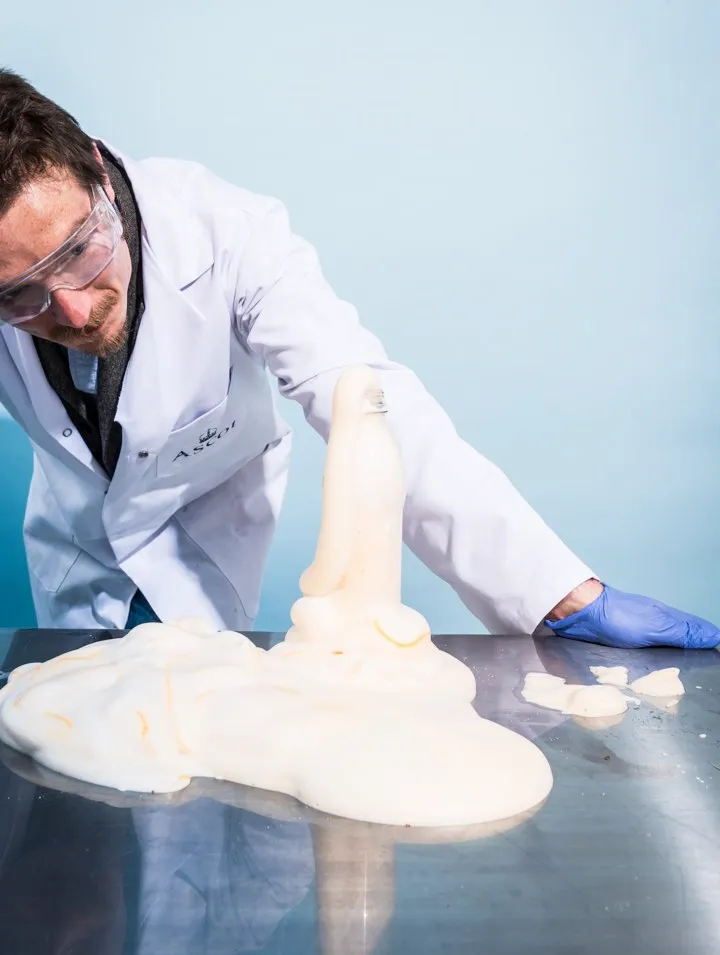Need some eye-opening and fun science experiments to try at home with family and friends? Here's one from ourDIY Sciencespecial inissue 310ofBBC Focusmagazine (subscribe here).No specialist equipment is needed for this one, butjust remember to wash your hands after making elephant toothpasteand make sure that children are supervised by an adult.
To make elephant toothpaste you will need:

- Safety goggles (best to get a pair that completely seal your eyes so that notoothpaste gets underneath)
- Gloves
- Washing-up liquid
- Dried yeast (make sure that it is in date)
- Warm water
- Food colouring
- Empty 500ml plastic drinks bottle
- 9% hydrogen peroxide, whichis a mild skin disinfectant that you can buy over the counter at pharmacies(Warning: hydrogen peroxide can irritate eyes and sensitive skin, so wear safety glasses and gloves. Do not swallow hydrogen peroxide or splash in eyes.)
- Funnel
- Glycerine, which you can find in the baking section of the supermarket, or in bigger bottles at a pharmacy
Method
- This experiment is messy! Either work at a table that’s easy to clean, or head outside.
- The dried yeast needs to be rehydrated to ‘activate’ the microbes. Thoroughly mix two or three tablespoons (or one sachet) of yeast with some warm water in a bowl. Leave for a couple of minutes while you get everything else ready.

© Steve Sayers/The Secret Studio - Put on gloves and safety glasses.
- Pour half a cupful of hydrogen peroxide into the bottle (more if you’re using a larger bottle).
- Add a good squirt of washing-up liquid.

© Steve Sayers/The Secret Studio - Pour in up to two tablespoons of glycerine.
- You are going to be making toothpaste, so why not add some food colouring? I drizzled some orange food colouring down one side of the bottle and blue down the other.
- Pour the (now activated) yeast into the bottle using the funnel.
- Stand back as the bottle erupts with a thick foam that seems to just keep on going. It looks like toothpaste, but it’s definitely not for brushing teeth with!

What's going on?
Elephant toothpaste isn’t toothpaste at all, but a foam of oxygen bubbles that have been ensnared by the washing-up liquid and thickened by the glycerine.
Chemically, hydrogen peroxide is made of two hydrogen atoms and two oxygen atoms (H2O2). This makes it similar to water (H2O) but with an extra oxygen atom (O) – yet hydrogen peroxide is poisonous to living things, which is why we use it as a disinfectant, and why we keep it away from our mouths and eyes.
Yeast, however, carries a protective enzyme called catalase that destroys hydrogen peroxide. The moment the living yeast cells touch the liquid disinfectant, the enzymes go to work tearing the hydrogen peroxide molecules apart, into water and oxygen. The oxygen bubbles up vigorously to form a rapidly growing foam that erupts from the top of the bottle, such is the fervour of the reaction.
You can try this science demonstration with liver instead of yeast, as this organ also contains enzymes that destroy hydrogen peroxide.
Follow Science Focus onTwitter,Facebook, Instagramand Flipboard